All Available Episode
All Season 6 Episode
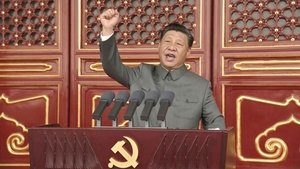
1. Heirs of the Red Gene: A Century of Chinese Communist Rule
In 2020, the Communist Party of China celebrated its centenary, hailing its own legacy as a so-called "red gene." What does that "red gene" actually mean for ruling a country of 1.4 billion people under a one-party state? We spent 3 months embedded with Party branches in 2 rural communities to chronicle the disparities in development, prosperity and ideological indoctrination. As the Party gears up to mark its 100th year, the supreme leader of China, Xi Jinping, pushes a "back to the roots" strategy of indoctrination called "passing on the red gene." How is the Party's history being presented to the people of China today? How are local cadres dealing with social disparities driven by big-money capital flows? See the real face of today's China as we spend 3 months in frontline rural Party branches.

2. Emperor Showa Speaks: The Path to War - Part 1 (1928-1937)
Eighty years have passed since the attack on Pearl Harbor, which led to the start of the Pacific War. It has recently come to light that, soon after Japan's defeat, Emperor Showa spoke at great length about the path to war. This discussion was recorded in the Haietsuki (Records of Imperial Audiences) by Tajima Michiji, the grand steward of the Imperial Household Agency. The emperor spoke repeatedly about his regrets over the failure to rein in the insubordination of the Imperial Army that began with the Zhang Zuolin Incident in 1928. In addition, the journals of the emperor's grand chamberlain Hyakutake Saburo were made public in September 2021. These newly available historical documents, coupled with dramatic recreations, are used to examine the decision-making of the emperor and his close aides in the period leading to the outbreak of the Sino-Japanese War in 1937. (Excerpt)

3. Emperor Showa Speaks: The Path to War - Part 2 (1937-1941)
Soon after Japan's defeat, Emperor Showa spoke at great length about the path to the Pacific War. This discussion was recorded in the Haietsuki (Records of Imperial Audiences). The emperor spoke of his remorse over the inability to restrain the Japanese military during a time of international upheaval. In addition, the journals of the emperor's grand chamberlain Hyakutake Saburo were made public in September 2021. In 1941, the emperor had high expectations for negotiations with the US. Japan's advance into southern French Indochina (now Vietnam) brought unforseen American economic sanctions. In the end, the emperor ordered Tojo Hideki to form a Cabinet, and went on to sanction the beginning of the war. The journals record his anguish in great detail. These newly available historical documents, coupled with dramatic recreations, are used to examine the decision-making of the emperor and his close aides in the period leading to the outbreak of the Pacific War. (Excerpt)

4. FINDING SATOSHI
This is the bizarre story of a worldwide hunt to find a mysterious Japanese man named Satoshi. It started as a puzzle in an "Alternate Reality Game" where players were provided with a single photo of the man with the words, "Find Me." The search grew into a global obsession with thousands of people looking for him online. He was not in hiding yet he was nowhere to be found ... even after 14 years! Who is Satoshi? Why did a simple game last so long? All will be revealed in this special documentary.
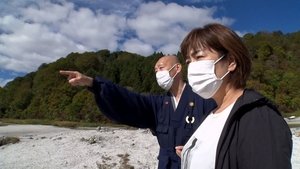
5. A Monk’s Lessons: Living Amid Death From COVID
Unable to properly bid farewell to deceased loved ones, especially during the COVID pandemic, many have sought solace at Mt. Osorezan, a Buddhist temple long viewed as a portal to the underworld. Minami Jikisai has been a monk there for 16 years. Fujita Ai cared for patients at their homes when hospitals were filled to capacity. Their deaths left her traumatized and searching for relief. How can we learn to accept death? This program will take you to a place where people go in search of answers.
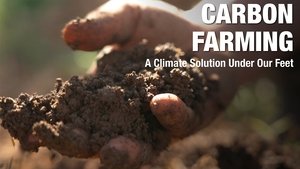
6. Carbon Farming: A Climate Solution Under Our Feet
A powerful tool for curbing climate change is right beneath our feet ... soil! Carbon farming, also called regenerative agriculture, is a revolutionary method that traps carbon from the air into the ground to produce nutritious food. Instead of tilling and using agrochemicals, farmers let the natural ecosystem do the work. We visit pioneers of this method, including Gabe Brown in the US and Yoshida Toshimichi in Japan.

7. Reviving Tezuma: Japan's Traditional Magic
Tezuma is a form of magic unique to Japan that uses tools and movements not seen in Western magic. Some of the captivating performances embody a Japanese outlook on life. Fujiyama Taijyu is one of the rare young successors of the art and has an impressive track record of becoming number 1 in Asia in an international magic competition. His wish is to show the entire world, the traditional Tezuma magic. In order to revive Tezuma, which took a backseat to Western magic after WWII, Fujiyama will be bringing back a long-lost performance. Come join us as we follow his challenge up the premiere.
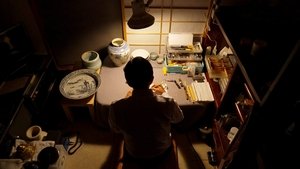
8. The Unknown Master of Restoration
Mayuyama Koji is an art restorer who works with antique dealers and museums nationwide. His unique skills allow him to flawlessly restore broken works to their former conditions, earning him the nickname "God Hand." The practice originated from his father in the postwar period, when many antiques would be repaired secretly through underground means. This documentary reveals the details of his techniques, as well as his mission not just to restore art, but to preserve it for generations to come.

9. Fukushima Monologue II
"What should be cherished? What should be passed on?" After the Fukushima nuclear accident, Matsumura Naoto stayed put in his hometown of Tomioka to look after abandoned animals. A decade later, Matsumura is now battling to revive a rice field in a decontaminated wasteland. As once-treasured farmland is lost to various new forms of development, Matsumura's solitary struggle to carve out a different path to the community's future casts the theme of post-disaster reconstruction in a new light.

10. Fukushima: The Curse of Groundwater
The decommissioning of the Fukushima Dai-ichi Nuclear Power Plant continues to produce contaminated water. Filtered to remove much of its radioactive content, it is stored on the site as treated water, now filling 1,000 massive tanks. In April 2021, the Japanese government announced plans to dilute the water to contamination levels far below legal limits before discharging it into the sea. However, people in the local fishing industry continue to harbor deep distrust. Why has this problem become so entrenched? The program explores a plan that was proposed soon after the accident 11 years ago, to build an impermeable wall around the plant and prevent the buildup of contaminated water, and why this plan was abandoned.

11. Ukraine: Prelude to a Crisis
Ukrainians know the value of freedom. In the past, they have staged revolutions and given up nuclear arms in the name of democracy. But now, Russia's invasion is exposing the fragility of their independence like never before. This crisis is more than 30 years in the making – the culmination of an increasingly tense period dating back to the end of the Cold War. Here, people on both sides discuss a tragedy that has displaced millions of civilians, and robbed many of their livelihoods and loved ones.
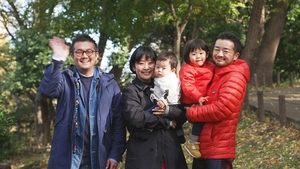
12. Rainbow Family
Siblings Aru, age 3, and Kino, age 1, have 3 parents: father Fumino, who is transgender; mother Honoyo, Fumino's partner who gave birth to the children; and father Gon, a close gay friend who donated his sperm. The 3 are now raising their children together, struggling repeatedly to find their own way of being a family. This program covers their first 3 years of parenting. And it asks an important question: What does it take to be a family?
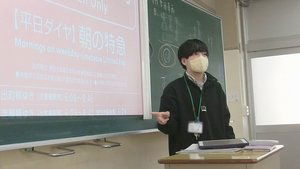
13. A Teacher's Life Lesson
Mr. Takehana is a popular teacher at a high school in Kyoto Prefecture. His classes are highly interactive, filled with laughter and respect. He listens attentively to his students and never scolds them without asking for their side of the story. Many of his students lack self-confidence and self-esteem. As a gay man, Takehana suffered from years of self-hatred before coming out. Takehana decides to tell his students how he came to accept himself in the hope that it will help them. By telling his story, he wants them to understand that they, too, will be fine just as they are.

14. Karl and Tina: Village Life in the Deep Snow
Nestled in rural Niigata Prefecture is a village of traditional Kominka homes that have been renovated by German architect Karl Bengs since he moved to the area with his wife, Tina. In the winter of 2021, the village found itself under more than 4 meters of snow after the heaviest snowfall in 40 years. The blanketing of snow posed various challenges, but the community made the most of the winter wonderland. There was Tina's special stew, pizza baked in a wood-burning stove, and scenes of children frolicking outside. As Karl walked along in the freshly fallen snow, he said to himself, "This is the most beautiful village in the world." After the harshness of winter, the arrival of spring offers fresh joys. One woman who recently moved to the area prepares items for a picnic with the elderly women of the village. Join us as Karl and Tina take us on a tour of winter life and show us how the villagers prepare for the season of new beginnings.

15. Daily Life in Times of War
Even in the depths of war, people maintain their daily routines – cooking, dressing up, even falling in love. NHK has been asking viewers to share their experiences and turning them into animations. Now, young people in Japan are interviewing World War II survivors to learn what life was like back then, hoping to pass their stories down to future generations. What can they learn from the war 77 years ago? What can they do to ensure it doesn't happen again?
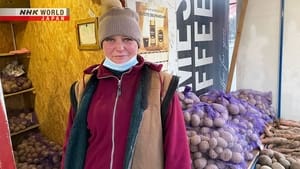
16. Kyiv, the Resistance of Citizens
In March, the Russian army was closing in on the Ukrainian capital of Kyiv, and it was expected to fall in a short period of time. But in fact, many citizens chose to remain in their beloved city and provide resistance in whatever way they could. Despite daily missile attacks and the fear of an impending urban war, they were united in their efforts to protect their freedom and democracy. This documentary looks at the people of Kyiv through the eyes of a Ukrainian filmmaker.
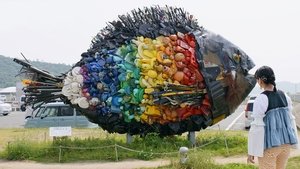
17. Art of the Inland Sea
The Seto Inland Sea, with over 700 islands, historically prospered from fishing and farming. These island communities are now enjoying a revival thanks to visitors drawn from around the world by the Setouchi Triennale art festival. Our guide, Non, is an actor and artist with a deep interest in our connections to nature, a theme that runs through the festival's artworks. Non meets artists inspired by the islands' history and landscapes, and islanders whose lives have been changed by the festival.

18. Art is Our Voice
We follow 21 dancers from Ukraine's famed National Opera and Ballet Theater on their summer Japan tour. Since Russia's invasion, many company members escaped Kyiv for cities across Europe to continue practicing their art. But they have conflicted feelings about leaving their families back home. In their first overseas tour they reunite in Japan to perform in 16 cities and honor their country. NHK cameras capture the company members' month-long emotional journey.
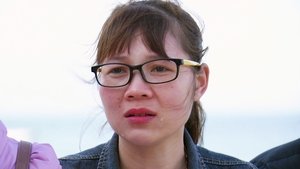
19. Land of Rising Dreams?
"Japan is a developed country. A good country." That's what many Vietnamese people believe when they come to Japan as technical intern trainees. For four years, NHK has followed 10 Vietnamese intern trainees who arrived with a dream, but were subjected to harsh conditions, long working hours, wage theft, and violence. The COVID-19 pandemic made their lives even more difficult. Then, six of them fled from their workplace. What became of them? Our investigation uncovered the dire situation that they and many others like them face, including illegal lenders, unwanted pregnancy and abortion, and the coronavirus itself. What can be done to change this harsh reality?

20. Karl and Tina: Bountiful Autumn in the Village
Situated in Niigata Prefecture is a village of distinctive Kominka traditional houses. Join us as we revisit some of the residents who make the village special and see signs of summer passing into autumn. We drop in on German-born architect Karl, responsible for renovating many of the local homes, and his wife Tina as they prepare the evening meal on a summer afternoon. We also meet a woman who came to try out village life for just six months but ended up marrying a local and becoming a resident. Then there is the member of Karl's team who dreams of starting her own fruit-growing operation. We also encounter a mother who hopes that her new life in the village will allow her to make a fresh start with her daughter. We see locals enjoying honey and vegetables that are the bounty of summer, even as the harvest festival and autumn foliage usher in a new season.

21. Mississippi Revealed
Journey with Cannon Hersey as he explores parallels between battles over voting rights today and the historic struggles of the 1964 Freedom Summer in Mississippi. With his grandfather, famed writer John Hersey's groundbreaking "A Life for a Vote" as a roadmap, Cannon reveals how black farmers cultivated freedom by tending the earth, and are still striving to overcome a legacy of systemic oppression.

22. JAPAN-NORTH KOREA SUMMIT: Behind the Curtain
The Japan-North Korea Summit 20 years ago took on the Japanese abduction issue and DPRK's nuclear threat. A Japanese diplomat quietly made it all happen. We follow these behind-the-curtain negotiations, sharing interviews with former US diplomats as well as an abductee's family member.
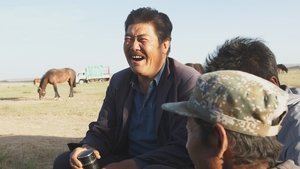
23. Mountainous Traditions
Near the 4,000 meter peaks of China's Qilian Mountains reside the Tu people. Blessed by rich nature, they live traditionally, herding white yaks and horses known as Chakouyi steeds. A recent archaeological discovery revealed that their lineage dates back to a kingdom that prospered in the era of the silk road. But now, the history they have cherished for 1,400 years is at risk of dying out due to regional prohibition of herding. In this program, we follow in the footsteps of a noble tradition.
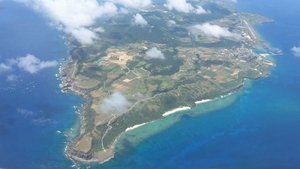
24. OKINAWA'S RETURN: 50 YEARS ON - Islands at Odds with Peace & Security -
In May, people in Japan's southwestern islands of Okinawa marked 50 years since the American military rule came to an end. Though the fierce battle scars linger, the islanders are now caught up in the rising tensions between the US and China over Taiwan. And the nation's Self-Defense Forces are boosting their presence. We look at how the new geopolitical situation poses big security questions to the islands. And we follow young people there, who are joining the SDF, to gauge their swinging emotions.
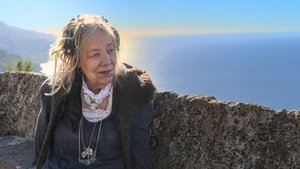
25. Poet of the Piano Fuzjko Hemming: On a Journey to Chopin's Mallorca
Over 90 years old, Fuzjko Hemming still takes to the world's stages as a "pianist of the soul." But her life has not been without obstacles, such as severe hearing loss and a period of statelessness. Her favorite composer, "poet of the piano" Chopin was also beset by obstacles. Taking a winter sojourn to the Spanish island of Mallorca for his health, he wrote several masterpieces despite being told by doctors that he would die there. We follow Fuzjko as she traces Chopin's precious time in Mallorca.

26. Stopping the Next Pandemic: The Virus Hunters' Mission - Part 1
COVID-19 brought the threat of unknown viruses to global attention. This documentary, an international co-production with France, explores what's necessary to prevent another pandemic. Scientists assert that pandemics are inevitable under an international capitalistic economy. The risk from zoonotic diseases — those passed from animals to humans, such as bird flu is particularly high. The program reports on experts known as "virus hunters," working all around the world. We see how deforestation and poaching are contributing to the spread of viruses.
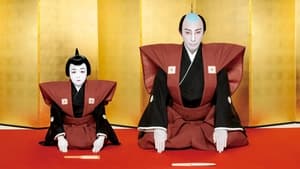
27. Danjuro: A Kabuki Star for Three Centuries
Kabuki actor Ichikawa Ebizo in November of 2022 assumed the name Ichikawa Danjuro XIII in an important milestone in his career. The names of performers are passed down for generations in the world of kabuki and actors may have several names over the course of their career. The first Ichikawa Danjuro established many well-known kabuki traditions 300 years ago and quickly rose to prominence. Those who have assumed the Danjuro name have created many popular works such as Sukeroku and Kanjincho, and the name has become one of the most venerable in kabuki. Ichikawa, who has become the 13th-generation Danjuro, is undoubtedly the world's most famous kabuki actor, having performed at the Palais Garnier in Paris and in the opening ceremony of the 2020 Summer Olympics in Tokyo. Join us as we take a look at a special performance to mark the name change and some of the highlights of his repertoire in a program that will entertain and educate both kabuki novices and aficionados.
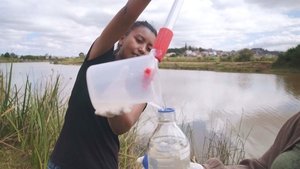
28. Stopping the Next Pandemic: The Virus Hunters' Mission - Part 2
COVID-19 brought the threat of unknown viruses to global attention. This documentary, a collaboration between Japanese and French broadcasters, explores what's necessary to prevent another pandemic. We follow experts known as "virus hunters," working all around the world in an effort to stop the next pandemic. In part two of a two-part series, we learn the importance of protecting biodiversity. This connects to a concept called "One Health," which involves treating human, animal and environmental health as a unified whole. We also investigate whether COVID-19 is being transmitted to animals in Japan, and hear about the risk of new infectious diseases within the country.
